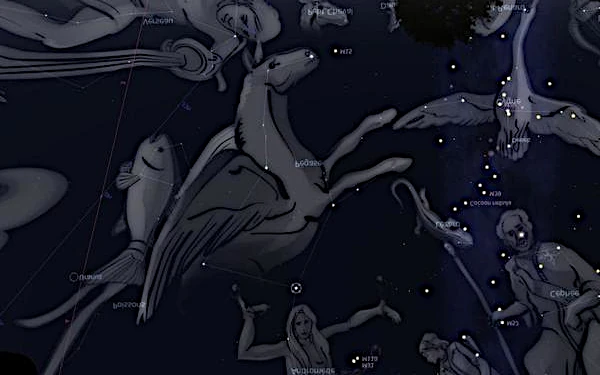
Image: Constellation of Pegasus. Image reworked from Open Source Stellarium software.
Have you ever heard of Pegasus, the winged horse from Greek mythology? Do you know that this mythical creature is also depicted in the night sky as a constellation?
The constellation Pegasus is located in the northern hemisphere and is easily spotted looking east in the early evening. The constellation is made up of four main stars, which form a large square called the Great Square of Pegasus. These bright stars are Alpha, Beta, Gamma and Alpha Andromedae.
The constellation Pegasus is famous for its characteristic inverted "Y" shape, which closely resembles the shape of a horse with its wings outstretched. Legend has it that Pegasus was tamed by the Greek hero Bellerophon, who used the horse to defeat the terrifying Chimera, a creature with the head of a lion, the body of a goat, and the tail of a serpent.
But the constellation Pegasus is also interesting for astronomers because it contains several fascinating objects to observe. For example, the Sombrero Galaxy is located within the borders of Pegasus. This galaxy is unique because it resembles a Mexican sombrero, with a dark center and a light border.
Additionally, the spiral galaxy NGC 7331 is also located in the constellation Pegasus. This galaxy is very similar to our own galaxy, the Milky Way, and is considered a prime example of what our galaxy might look like from the outside.
There are also several star clusters in the constellation Pegasus, such as the globular cluster M15. This cluster is made up of tens of thousands of old, bright stars, which are gravitationally bound together.
As you explore the constellation Pegasus, you can learn about the wonders of the universe and discover fascinating new objects to observe. So the next time you look up at the night sky, try to spot the constellation Pegasus and think of this legendary mythical creature that flies through the night sky.